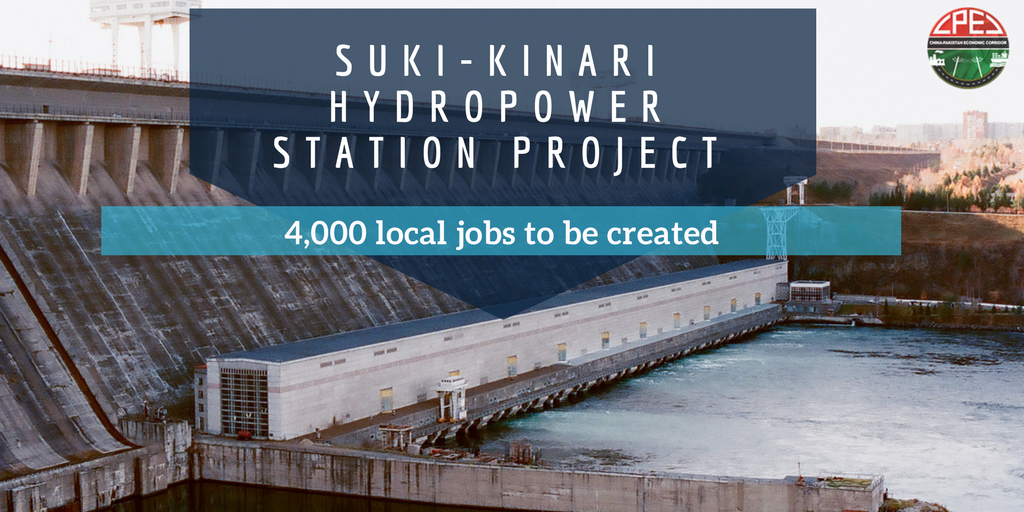Islamabad: The Suki Kinari Hydropower Project (SKHPP) is one of the largest private sector run of the river project with potential to generate 870MW of electricity and in the process provide 3000 jobs to the local community. “The SKHPP, being executed under China-Pakistan Economic Corridor (CPEC), will become operational in 2022 and generate jobs for 3,000 local residents under recruitment plan in 2019 and 2020,” said Counsellor Embassy of China Li Yuanling.
The Suki Kinari (SK) hydropower project located on Kunhar River in the Kaghan Valley of District Mansehra, Khyber Pakhtunkwa, will add 870MW to the national grid by December 2022.
Presently around 1,600 Pakistani people are working on the SKHPP including over 900 skilled manpower and 700 labourers. He said the company is hiring the services of labourers from district Mansehra only. Highlighting the recruitment criteria, he said notice board had been placed at main gate of the project site office to hire services of the locals.
Giving detail of the project, the Counsellor said the SKHPP had been included in the CPEC projects for being in an advanced stage of development.
He said majority of local people have no experience to work in hydropower or other engineering projects, and they need to be trained by Chinese foreman or skilled man such as surveyor, operator for heavy equipment, carpenter, electrician, welder and plumber etc.
Chinese company ‘China Gezgouba Group Corporation’ initiated work on Suki Kinari Hydropower Project in December 2016 and total cost of the project is $1.92 billion and would be completed within 72 months.
The total Live of the project is 100 years and it will be handed over to the Pakistani authorities after 30 years. This Project is being built on “Build-Own-Operate & Transfer” basis.
The report published In January 1960, entitled “Kunhar River Project-Kaghan Valley.” was the first to identify power generation potential of the Kunar River.
In 1959, US consultants were engaged by WAPDA to study this potential.
Further studies were conducted in 1984 and 1995 to optimize the power potential of Kunhar River. These studies identified a series of potential sites along the river from where the energy could be produced by cascading the water energy through run-of-the-river hydro projects.
Studies suggested potential sites for these projects at Batakundi, Naran, Suki Kinari, Balakot and Patrind. Run-of-the-river project envisages that the water is drawn from the river, taken to the turbines in a powerhouse, located downstream through tunnel and after running the turbines and producing energy, the water is again diverted back to the river.








